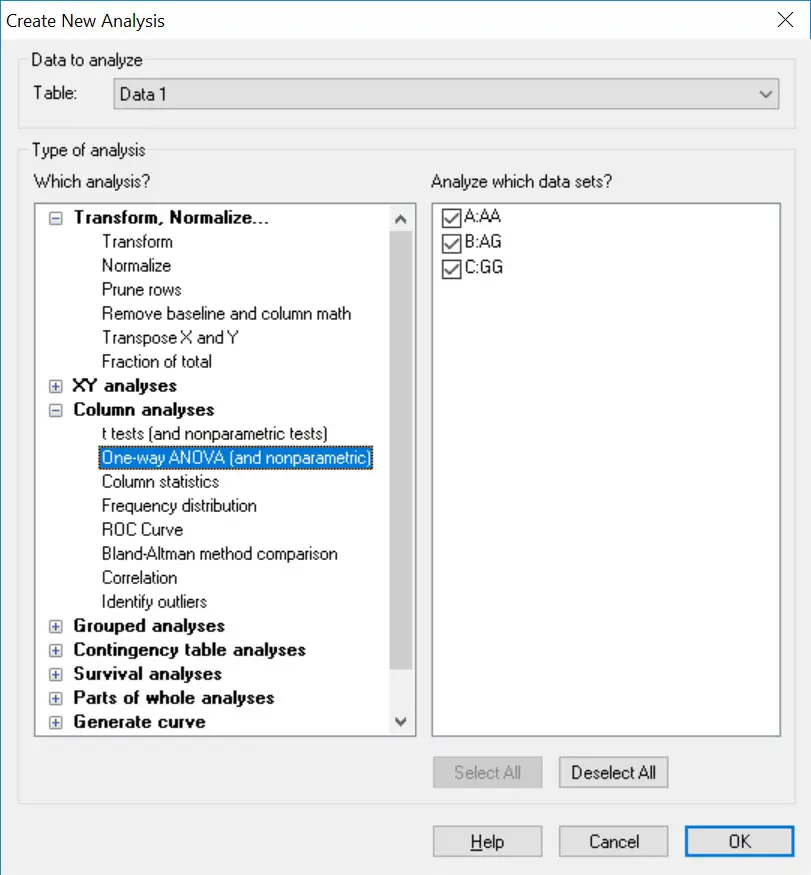

Choose to Create a new project and to Work independently. When you launch Prism, the Welcome to Prism dialog appears. If you have more than two groups, but the data are grouped by two factors, refer to step-by-step on one-way ANOVA. If you have only two data groups to compare, try the step-by-step example on t tests. To learn more about two-way analysis of variance, consult Analyzing Data with GraphPad Prism (pdf).

Is there interaction between the factors? That is, does the affect of treatment differ between exercise states, or equivalently, does the effect of exercise differ among treatments?Īt which treatments is there a significant difference between exercise levels? Is there an effect of exercise on heart rate? Is there an effect of treatment on heart rate? Two-way ANOVA, in combination with post testing, can answer the following questions: Suppose you've studied the effects on heart rate of three experimental treatments (factor 1) before and during exercise (factor 2). Two-way analysis of variance may be used to examine the effects of two categorical variables (factors), both individually and together, on an experimental response.


 0 kommentar(er)
0 kommentar(er)
